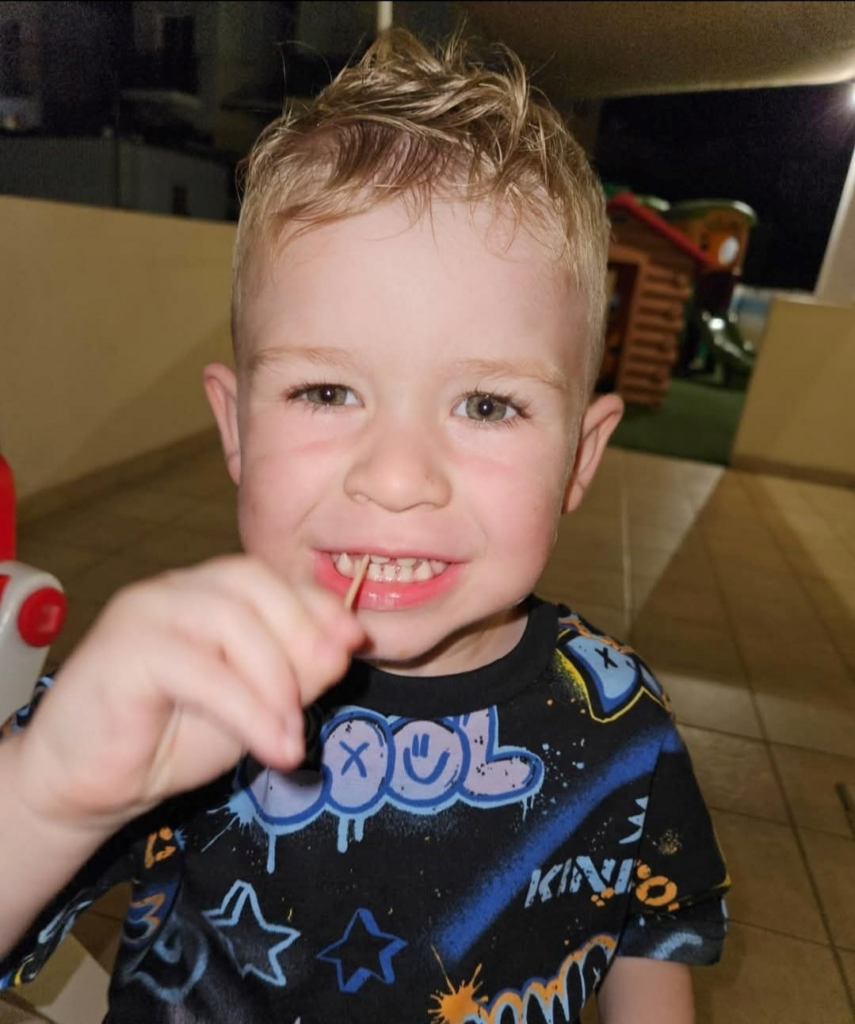A Yorkshire family is reeling from an unimaginable loss after their four-year-old son died suddenly from meningitis following what seemed like a normal family weekend away. The devastating story highlights how quickly this dangerous infection can progress and the importance of recognizing meningitis symptoms before it’s too late. For parents, knowing these critical warning signs could make the difference between life and death.
“He Was Our Miracle Baby“

“He was our miracle baby and our last chance of having kids – now he’s gone.” shares Sammy Knowles, 40, from Sheffield, whose world collapsed when her son Jaxon passed away in February. After enjoying a family trip to Blackpool where Jaxon “loved to dive bomb in the pool” and was full of energy, things turned terrifying. On the journey home, Jaxon began complaining about pain “He was complaining about under his armarmpit hurting. He then went to sleep for a while before waking up to say that he had a tummy ache.” What seemed like a typical childhood complaint quickly escalated into a parent’s worst nightmare.
“When we got home around 6pm on Sunday, as I lifted him out of the car he kept asking to sleep in ‘mummy’s bed’ – which he always did when he was ill,” Sammy recalls. Initially, the concerned mother thought it might be a routine chest infection, something Jaxon had experienced before. She gave him Calpol to manage his temperature and stayed up with him until 2 am. When she checked on him at 5 am, using her phone’s flashlight to avoid disturbing him, she noticed something alarming, a rash had appeared on his skin. “My first thought was that it was chicken pox and I was devastated for him but when I turned on the lamp next to me, I immediately saw how bad it was.”
Read More: Grieving Parents Preparing for Son’s Funeral Find Harrowing Note He Left Them in the Living Room
Racing Against Time

The situation deteriorated rapidly. As the parents prepared to take Jaxon to the emergency room, his condition worsened dramatically. “He threw up, and then his mouth and tongue began swelling. We immediately called 999 who told us to lay him down but he couldn’t breathe so we had to turn him to his side,” Sammy recalls.
It wasn’t until they reached the ambulance that medical staff first mentioned meningitis. At Rotherham Hospital, 15 medical professionals waited to treat Jaxon as his rash worsened and turned purple. Despite doctors’ efforts to stabilize him, Jaxon’s heart stopped. Although they initially restarted it, the little boy ultimately passed away just hours after first complaining of discomfort. “It still doesn’t feel real. He was fine all weekend and in a matter of hours he is gone. There were no symptoms of meningitis.”
Understanding Meningitis Symptoms

Jaxon’s tragic case highlights the importance of understanding meningitis and its warning signs. Meningitis is inflammation of the membranes that surround the brain and spinal cord. The disease can be caused by viruses, bacteria, fungi, or parasites. Bacterial meningitis is particularly dangerous, progressing rapidly and potentially becoming life-threatening within hours. Recognizing meningitis symptoms can be lifesaving. While meningitis symptoms can vary between children and adults, common warning signs include:
Perhaps the most critical visual symptom is the meningitis rash, which doesn’t fade when you apply pressure (the “glass test“). The rash begins as small, reddish pinpricks that can rapidly develop into larger purple patches resembling bruises. This indicates that bacteria have entered the bloodstream and are damaging blood vessels, exactly what happened in Jaxon’s case as his rash quickly worsened and turned purple.
Read More: After Giving Birth, Woman Gives Family ‘Strict Rules’ to Follow if They Want to Meet Her Baby
A Silent and Swift Progression

What makes meningitis particularly frightening is how quickly it can progress from mild meningitis symptoms to life-threatening conditions. As in Jaxon’s case, a child can appear perfectly healthy one day and critically ill the next. Bacterial meningitis, in particular, can progress extremely rapidly. About 1 in 10 people who get bacterial meningitis die, and 1 in 5 survivors experience serious complications, even with proper treatment. Jaxon’s story illustrates the heartbreaking speed at which meningitis can advance. “He was such as good boy, no trouble at all. Now we have nothing,” says his mother.
Prevention and Awareness

Stories like Jaxon’s naturally lead parents to ask how they can protect their children. While not all forms of meningitis can be prevented, vaccines exist for several types of bacterial meningitis. Doctors recommend the meningococcal conjugate vaccine (MenACWY) for children ages 11-12, with a booster at age 16. Good hygiene practices can also help prevent the spread of germs that can lead to meningitis:
For parents, awareness of meningitis symptoms and quick action are crucial. If your child develops a fever, unusual rash, or shows signs of neck stiffness along with other meningitis symptoms. Seek immediate medical attention. The speed of response can make all the difference. Remember that minutes matter when dealing with meningitis symptoms, as early treatment significantly improves outcomes.
A Life Changed Forever

For Sammy and Jordan Knowles, the pain of losing their “miracle baby” after seven years of trying to conceive and five rounds of IVF is immeasurable. “He changed our world and finally made us parents after we suffered three miscarriages. He took our sadness away. He loved going on holiday and travelled the world with us. We took him to Lapland last Christmas.” Their story serves as a heartbreaking reminder of how precious life is and how important it is to be vigilant about meningitis symptoms. For this family, a normal weekend away ended in unimaginable tragedy, all within just 24 hours. If you suspect meningitis, don’t wait. Seek emergency medical care immediately, as early treatment is critical to preventing the worst outcomes of this devastating disease. Knowing meningitis symptoms and acting quickly could save a life.

